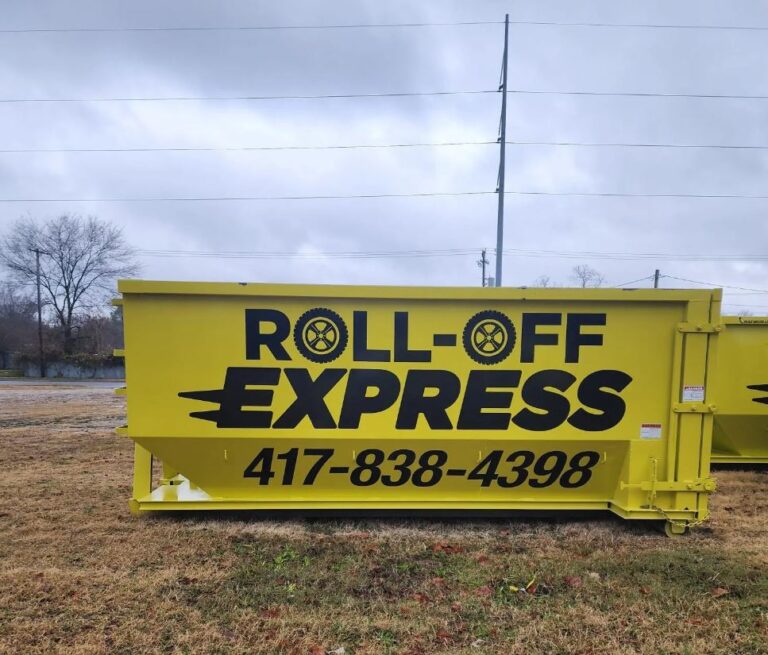

Determining the right dumpster size and number of dumpsters for a house demolition is critical for effective debris management. This involves considering various factors such as the size of the house, the type of debris, and the specific requirements of your demolition process. Whether it’s a smaller dumpster for a modest job or a larger 40-yard dumpster for a comprehensive project, making the right choice is crucial. We will take a closer look at these considerations, particularly focusing on roll-off dumpsters and their capacity in cubic yards of demolition debris.
For a complete understanding of house demolition, see Demolition 101: A Beginner’s Guide to Demo.
The number of dumpsters required for a demolition project varies greatly depending on the project’s scope – from a simple mobile home demolition to demolishing entire houses. The primary consideration should be the square footage of the building and the expected amount of debris, which is typically measured in cubic yards. For instance, a 1,000 square foot house might require several cubic yard dumpsters, while larger projects may need additional tonnage capacity.
Read more about different scales of demolition projects in Building Demolition for Beginners: Tips, Tricks, and Necessary Supplies.
When choosing the right size dumpster for a demolition job, several factors come into play. The material composition of the building, including concrete slabs and roofing materials, significantly influences this decision. For example, a concrete foundation is heavier than household waste and may necessitate a dedicated roll-off dumpster. Demolitions that produce a lot of green waste or yard waste also require specific considerations regarding dumpster size and weight limits.
Concrete is heavy, averaging around 140 pounds per cubic foot. For disposing of concrete debris, you’ll likely need heavy-duty dumpsters, such as 10 or 20-yard roll-off dumpsters designed for dense materials. It’s crucial to ensure the dumpster can handle the weight without exceeding its limit.
Roofing materials, including shingles, usually weigh about 250-300 pounds per 100 square feet. Standard 20-yard dumpsters are often suitable for roofing projects. However, the total area of your roofing project should be considered to determine the exact dumpster size needed.
These materials are relatively lighter. Drywall and typical household waste can usually be accommodated in smaller dumpsters, such as 10, 15, or 20-yard sizes. The choice depends on the volume of waste generated. For larger demolition projects, you might need multiple pickups or a larger dumpster.
Yard waste and other green materials, like leaves and branches, are lighter and often require different disposal methods. Composting or recycling options should be explored for green waste. If a dumpster is necessary, a standard 20-yard container may suffice, depending on the volume.
The weight and volume of wood and other construction materials can vary. For mixed demolition debris, a 30 or 40-yard dumpster might be appropriate. Separate dumpsters might be required for recyclable materials or if dealing with a significant amount of one material type.
Always remember these are approximate estimates, and actual weights can vary based on the condition and type of materials. For the most accurate advice tailored to your specific project, consulting with a professional demolition contractor or a dumpster rental company is recommended. They can provide guidance on the appropriate dumpster size and number, considering the specific materials and scale of your demolition project.
Accurately estimating the number of dumpsters for home demolition debris is vital for efficient and cost-effective debris management. To calculate the volume of debris for a standard 1,000-square-foot house, start by multiplying the house’s length, width, and height to get the total cubic feet.
Next, apply a debris compaction factor, typically 0.33 for residential demolitions, to account for the air space and non-compact nature of the debris. Then, convert the total to cubic yards by dividing by 27, as one cubic yard equals 27 cubic feet.
This volume estimate will guide you in choosing the right size and number of dumpsters. You might need a smaller dumpster for lighter materials or multiple larger roll-off containers for more substantial debris. It’s usually better to overestimate slightly to avoid the need for additional, costly dumpster rentals.
Dealing with concrete debris from building parts like concrete slabs, foundations, or driveways requires special consideration due to its heavy nature. To calculate the cubic yards of concrete debris, measure the length, width, and thickness of the concrete area to be demolished and convert these dimensions into cubic yards.
Since concrete is much denser and heavier than other demolition debris, using dedicated roll-off dumpsters designed for heavy materials is important. This ensures compliance with weight restrictions and facilitates easier and safer disposal.
Consulting with a dumpster rental company or a demolition expert is highly recommended. They can help determine the most suitable dumpster type, whether it’s a standard commercial dumpster or a specialized heavy-duty option. They can also advise on any additional fees or permits required for disposing of concrete waste.
For comprehensive guidance on managing concrete debris, explore resources like Concrete Demolition & Removal: Everything Homeowners Need to Know. These resources offer valuable insights into best practices and regulatory compliance.
Securing a reliable house demolition contractor is vital for a successful project. An experienced team can advise on the appropriate dumpster size and number, including considerations for weight limits and the type of dumpster best suited for your specific need. They can also provide insight into the cost of demolition and the potential for additional fees.
Managing green waste is an important aspect of any home demolition project. Including a plan for yard waste removal is crucial for an eco-friendly approach. A waste removal service can help in disposing of this type of waste responsibly, ensuring it doesn’t add unnecessarily to municipal solid waste.
For more on eco-friendly demolition practices, see ‘The Complete Guide to Home Demolition’.
Weight limits are a critical consideration when renting dumpsters for a demolition site. Exceeding these limits can lead to extra fees, especially with heavy materials like concrete. It’s important to discuss these limits with your dumpster service provider to avoid unexpected costs and ensure you have the right size dumpster rental for your project.
Before your demolition day, it’s a good idea to confirm the availability of dumpsters with your service provider. This step helps in ensuring you have the necessary dumpsters on-site for the duration of your project and can also address any questions about additional days or specific needs for your job site.
In summary, the key points in determining the number and size of dumpsters for house demolition include:
Assessing the right size dumpster and the number of dumpsters based on the scope of your project and the types of materials involved.
Understanding the impact of different materials, such as concrete and green waste, on dumpster selection.
Recognizing the importance of weight limits and potential additional fees in the cost of demolition.
The value of consulting with a professional team or dumpster rental company for accurate estimates and efficient debris management.
For further guidance on DIY house demolition and waste management, consider reading How to Demolish a House Yourself.
This guide offers a comprehensive overview of how to estimate dumpster requirements for house demolitions, emphasizing the importance of considering the size of the house, the type of debris, and specific project needs for precise planning.

Roll-Off Express | LETS TALK TRASH | Dumpster Rentals